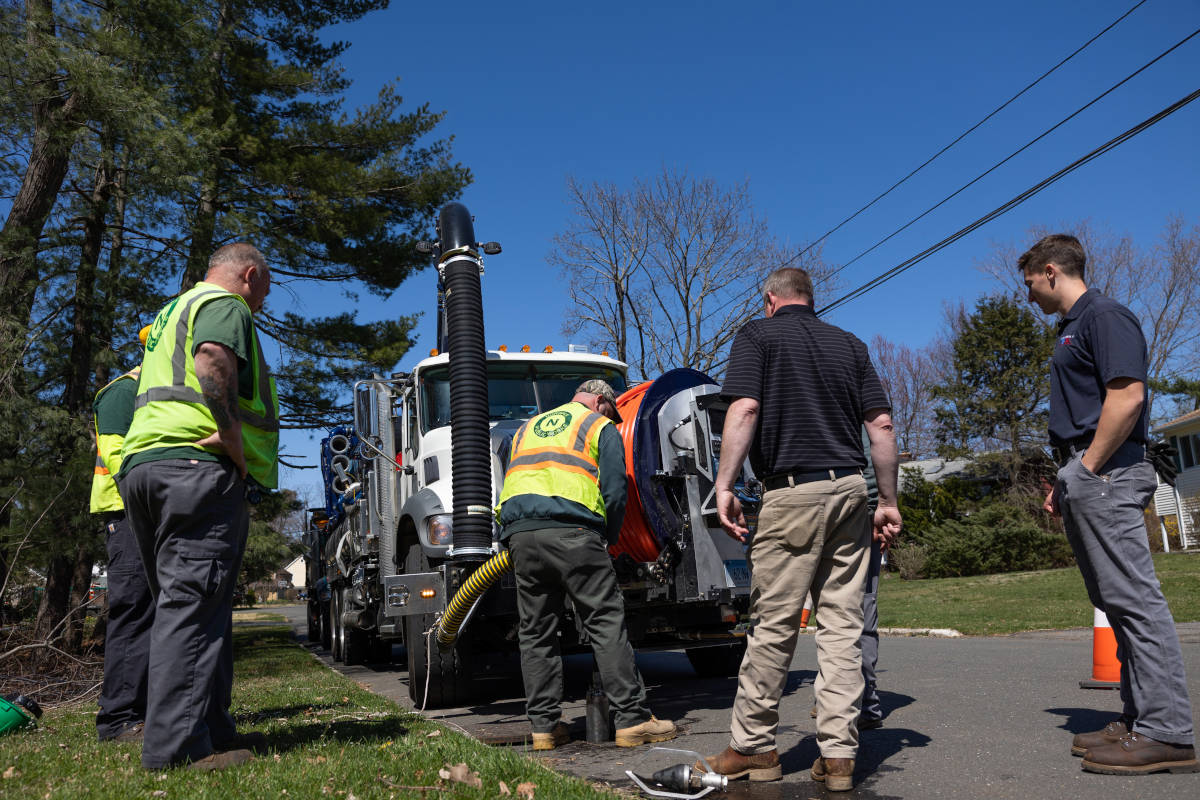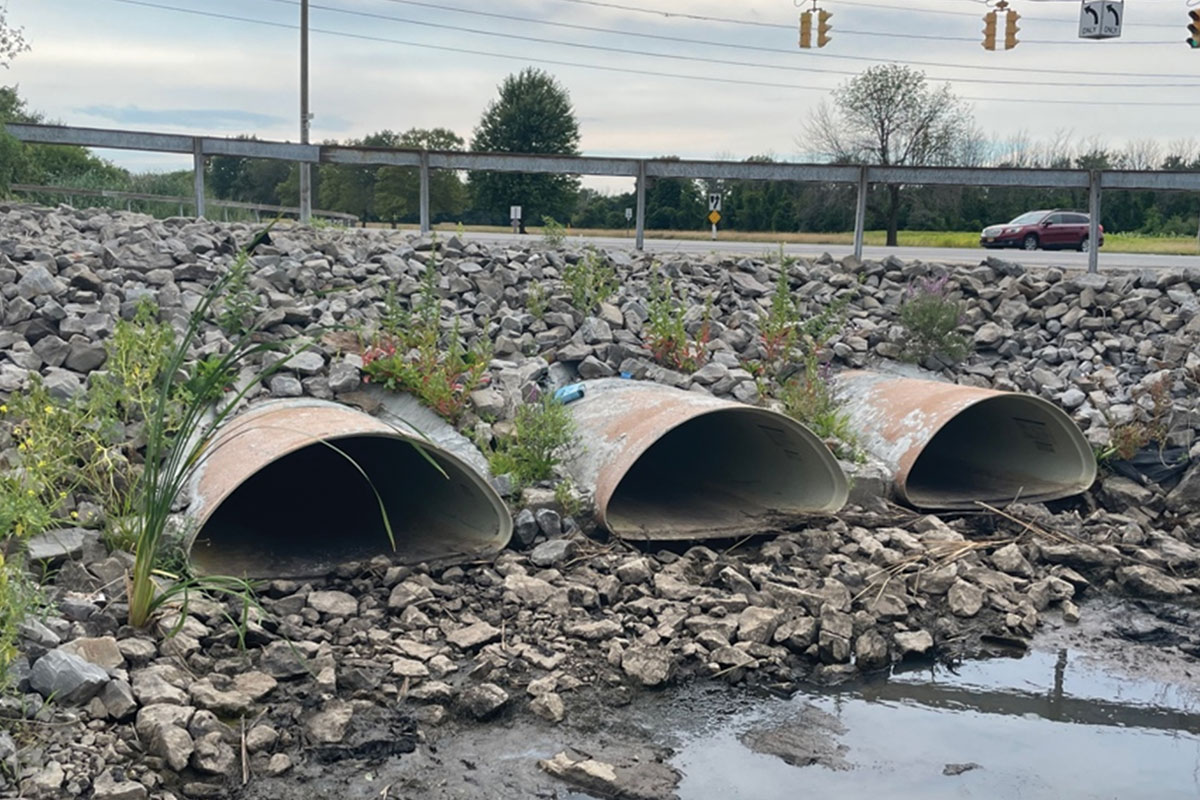
How to Deal with Challenges when Pipe Bursting Goes Wrong
Pipe bursting is a hybrid between new construction and rehabilitation. Rehabilitation is where an existing structure is enhanced in a way that extends the life of the pipe. In pipe bursting one bursts the existing pipe and uses the hole in the ground to install a new and possibly a larger pipe in the same location.
Why rehabilitate underground infrastructure rather than simply walking away and starting over? Because there is still value to the asset left in the ground. Given the choice between the manageable risk of an in-place pipe replacement/rehabilitation and excavating to replace the same pipe, rehabilitation should be considered first.
The bulk of the cost to install underground utilities is not in the pipe which might be 10 percent of the cost. Most of the cost or about 90 percent is in accessing the pipe zone and restoring the work site at project completion. By rehabilitating the asset, the savings can be considerable, easily up to 50 percent in CIPP and up to 25 percent in pipe bursting. All methods of pipe rehabilitation will almost certainly be less disruptive, less expensive and generate less greenhouse gases and complaints than open cut.
Pipe bursting breaks the existing pipe and uses the existing hole in the ground. This method can routinely accommodate an upsize by one or two pipe sizes, in exceptional cases increases of six pipe sizes have been completed. Some rehabilitation systems; CIPP, sliplining and spray on systems, do not affect the ground outside the existing structure and there is little or no risk from unknown ground conditions or structures. With pipe bursting, the surrounding ground is affected, and one can encounter these associated risks. The contractor and the owner / designer must be nimble to respond to unknown conditions and adjust the work to meet the conditions encountered.
Unknown Pipe Conditions
Historically, the only relevant information required was the size and location of a pipe, these are the records held by the owner. Pipe bursting contractors need more. In fact, the more relevant information the more certain the outcome.
A pipe that is weak in the longitudinal axis and strong in the radial axis and has a tendency to crumple rather than split. This can be overcome using a different cutting blade to concentrate the splitting or cutting action when the blade can be applied at a consistent angle to the pipe. In the case of CSP where the angle of the cutting blade changes every 50 mm because of the corrugations, precutting is recommended. Also likely, a product of different material in the pipe might be present. A rebar repair can disrupt the cutting process resulting in downstream pipe crumpling. These conditions while rare, if known can be planned for.
The bursting process for ductile products such as ductile iron or PVC as referenced above, might be slightly different than the bursting process for a non-ductile or brittle product such as AC or clay. Bursting a brittle pipe is done by using a cone to radially break the pipe and expand the surrounding ground. In ductile products a cutting blade rather than a cone might be used depending on the host material. These processes depend on the longitudinal strength of the existing pipe and on the strength of surrounding ground to restrain the pipe while it is being burst. A possible failure mode is the telescoping of a PVC pipe inside itself as the soil to pipe interface friction is not strong enough to restrain the pipe and let it split.
Unknown Ground Conditions
When the pipe is installed in a narrow trench that was created in compact soil or rock, the chance of upsizing that pipe is slim. This would only occur if the existing trench was hand dug or tunneled. Much more common in pre-1920s installations in very specific soil types. It is very rarely encountered but it is a possibility.
An understanding of the original installation process is useful to the rehabilitation contractor. A trench would have been dug in the existing ground that is generally larger than the pipe. The minimum trench size would have likely been 200 mm 300 mm on each side of the pipe, generally enough to allow lateral compaction.
The displaced material moves laterally and vertically as the material immediately above the pipe would have been compacted less during the initial installation process. This leaves an area of less compacted soil to allow the displaced soil to migrate to. By understanding this concept, the limitations of the process become obvious. In extreme cases relief holes can be drilled using HDD over the pipe zone that creates a void for the displaced soil to move to. There are solutions to almost every issue if the conditions are known in advance of the mobilization.
Unknown Repair
As with unknown pipe conditions, when the repair history of the pipe is unknown, showstoppers might be encountered that result in a 911 excavation. Both geotechnical boreholes and investigation potholes used to confirm existing pipe condition and location only represent what exists at that specific location. Conditions can change between points of observation. In the case of unknown fittings, repair couplings, different pipe materials or thicknesses, concrete encasement and joints, the bursting process can be stopped completely, and a rescue pit will be necessary.

Neighboring Utilities that Are Too Close
When designing any pipe program, whether open-cut or trenchless, it is crucial to have a complete understanding of all nearby utilities. In the case of pipe bursting, a rule of thumb is 10:1 ground disturbance ratio, in other words, an upsize of 100 mm will affect the ground up to 1m away. In congested utility corridors this could be an overriding issue.
Following the information gathering phase, a risk assessment needs to be completed on the neighboring utilities. A 1,050-mm concrete storm pipe will require a different level of care than a 100-mm high pressure gas line. A critical or high-risk utility such as a gas line or an electrical cable requires a sufficient air pocket space to isolate and protect the existing utility from the bursting process which will later be backfilled with controlled density fill. This also give the existing utility room to repair or upgrade their plant.
The actual displacement of the surrounding soils during the pipe bursting operation is not particularly disruptive but if this is an issue for the nearby utility then a monitoring program can be implemented. The neighboring utility may require monitoring for horizontal or vertical displacement or excessive vibration. If pneumatic bursting methods are used the vibrations are low intensity, static bursting produces no vibrations at all. This and other issues are addressed by the IPBA General Specifications for Pipe Bursting.
There is a pattern as to what might stop a pipe bursting job literally in its tracks, and that is the unknowns. The lesson is that even after the contract is awarded it is still worth the effort on the part of the owner to scour their records, speak with their long-time operations staff, look for as builts, old reports, microfiche, photo records anything that might shed light on the ‘medical history’ of the pipe being rehabilitated. Anything that can be gleaned from installation to early operation to midlife when occasional repairs are inevitable, to old age when replacement parts become necessary. All of that is information that can be used to make adjustments to the project equipment, alignment or process before the contractor mobilizes.
Wouldn’t it be great if all of this information could be included in a contract document, not to be as facts that could be proven in court, rather in a helpful way to include information that could ensure the right materials and equipment are available in case the worst-case scenario is your scenario.




